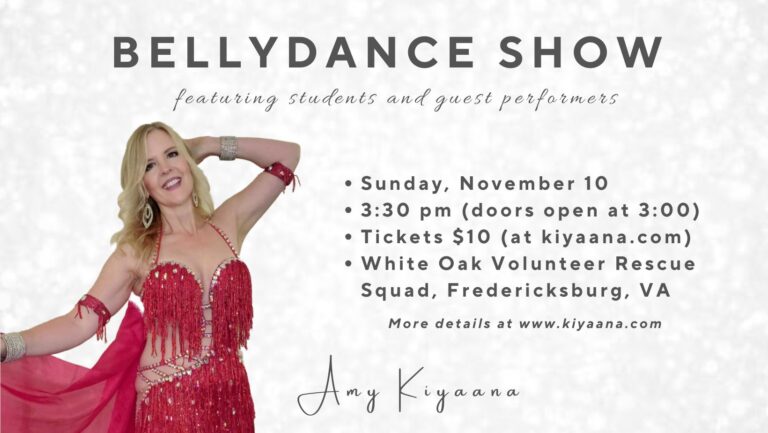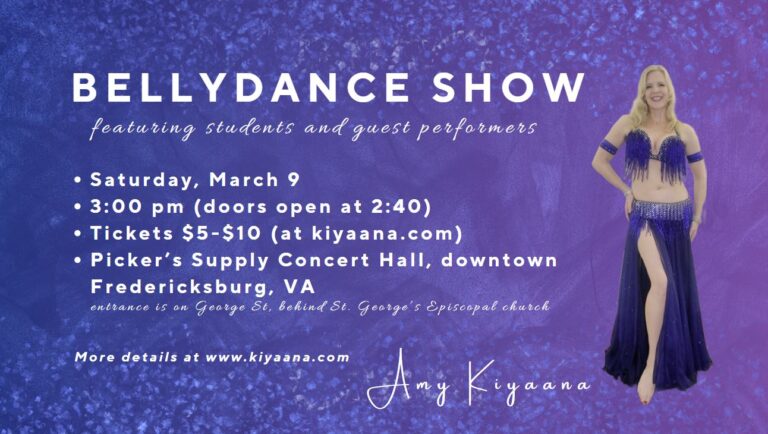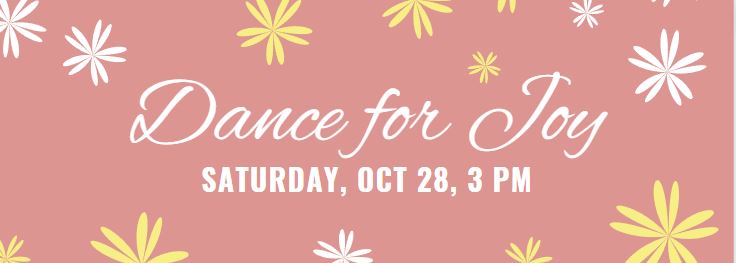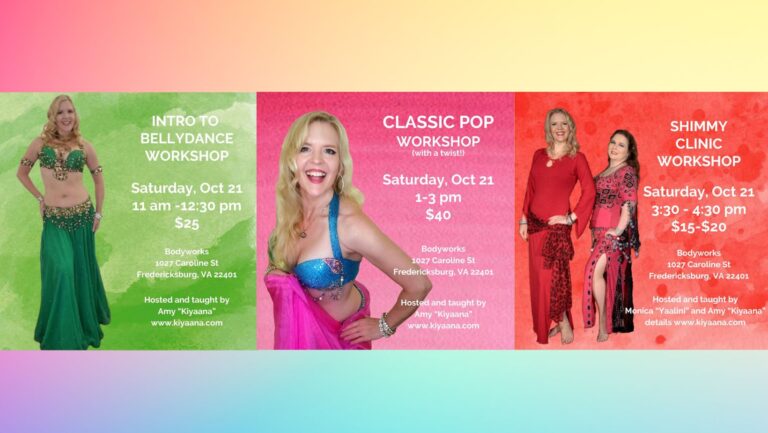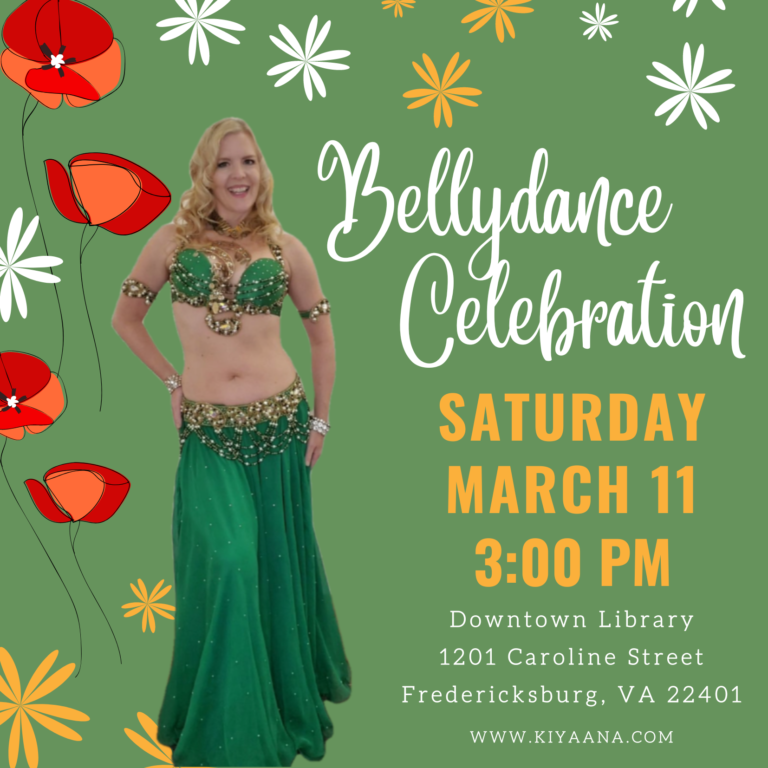Bellydance Celebration Show May 17, 2025
Join us for an afternoon bellydance show featuring Amy Kiyaana’s students, plus guest performers from Richmond, Northern VA, and Gloucester. Doors open at 2:30 pm. This event, held at the downtown Central Rappahannock Library, is free and open to the public.
